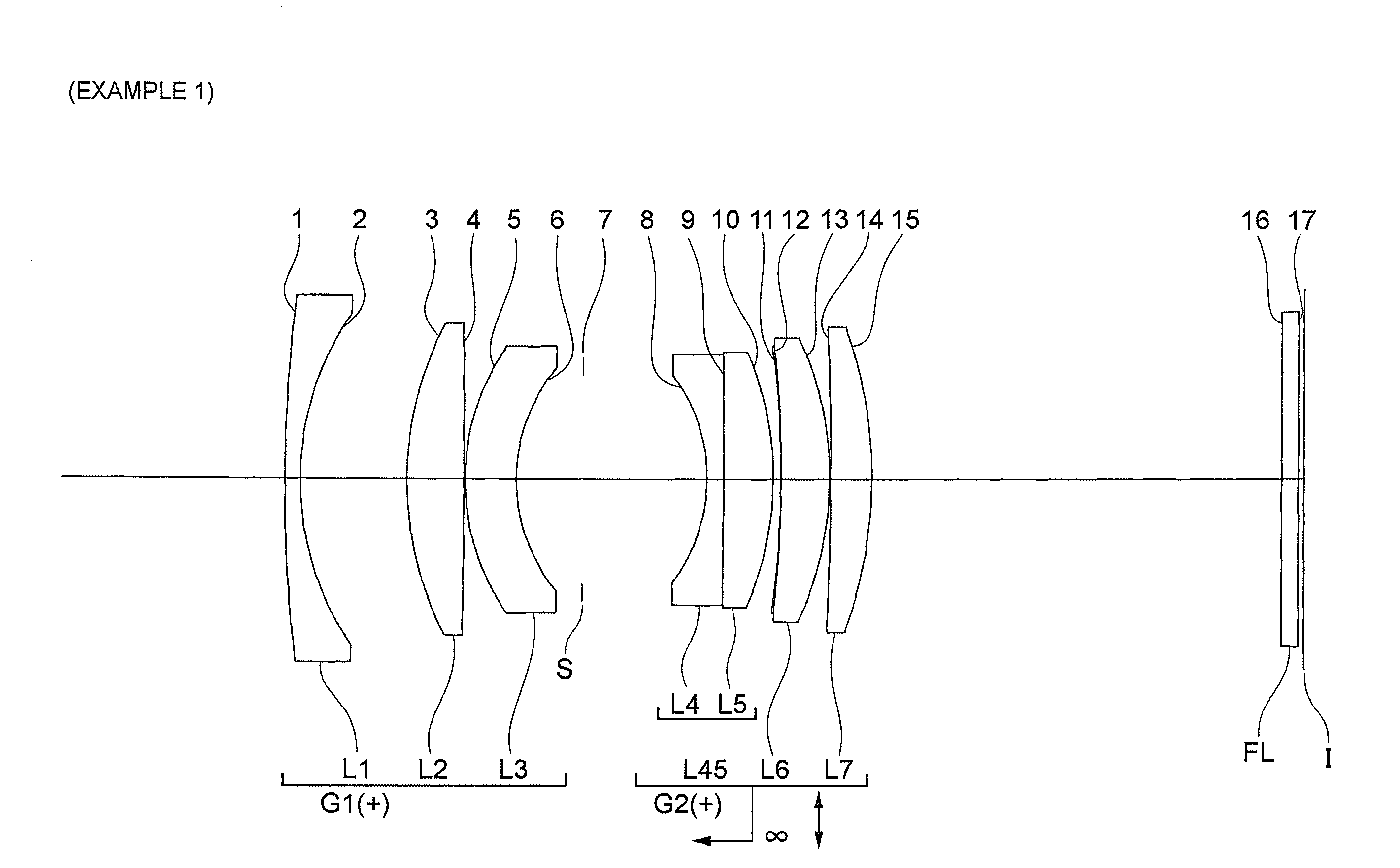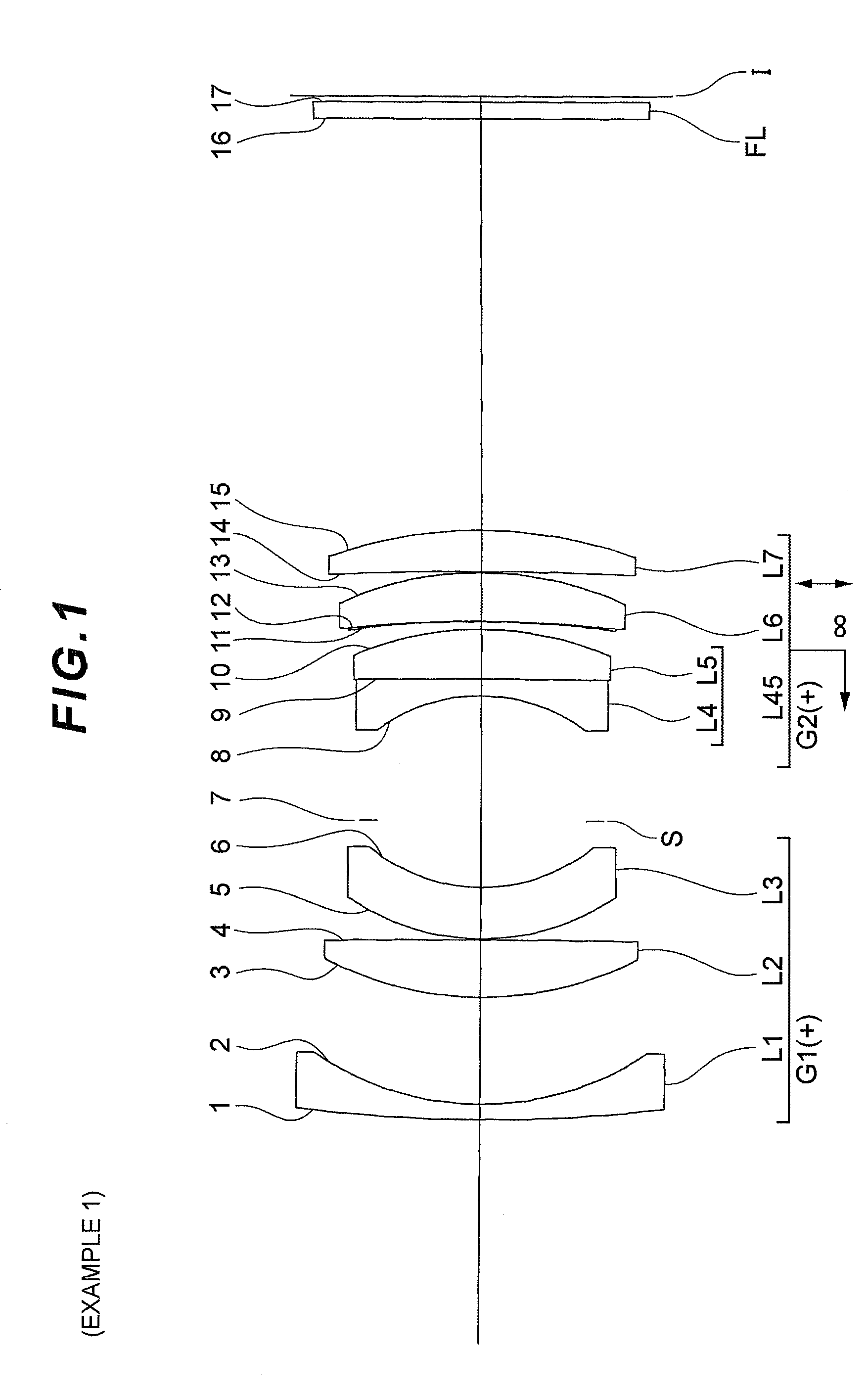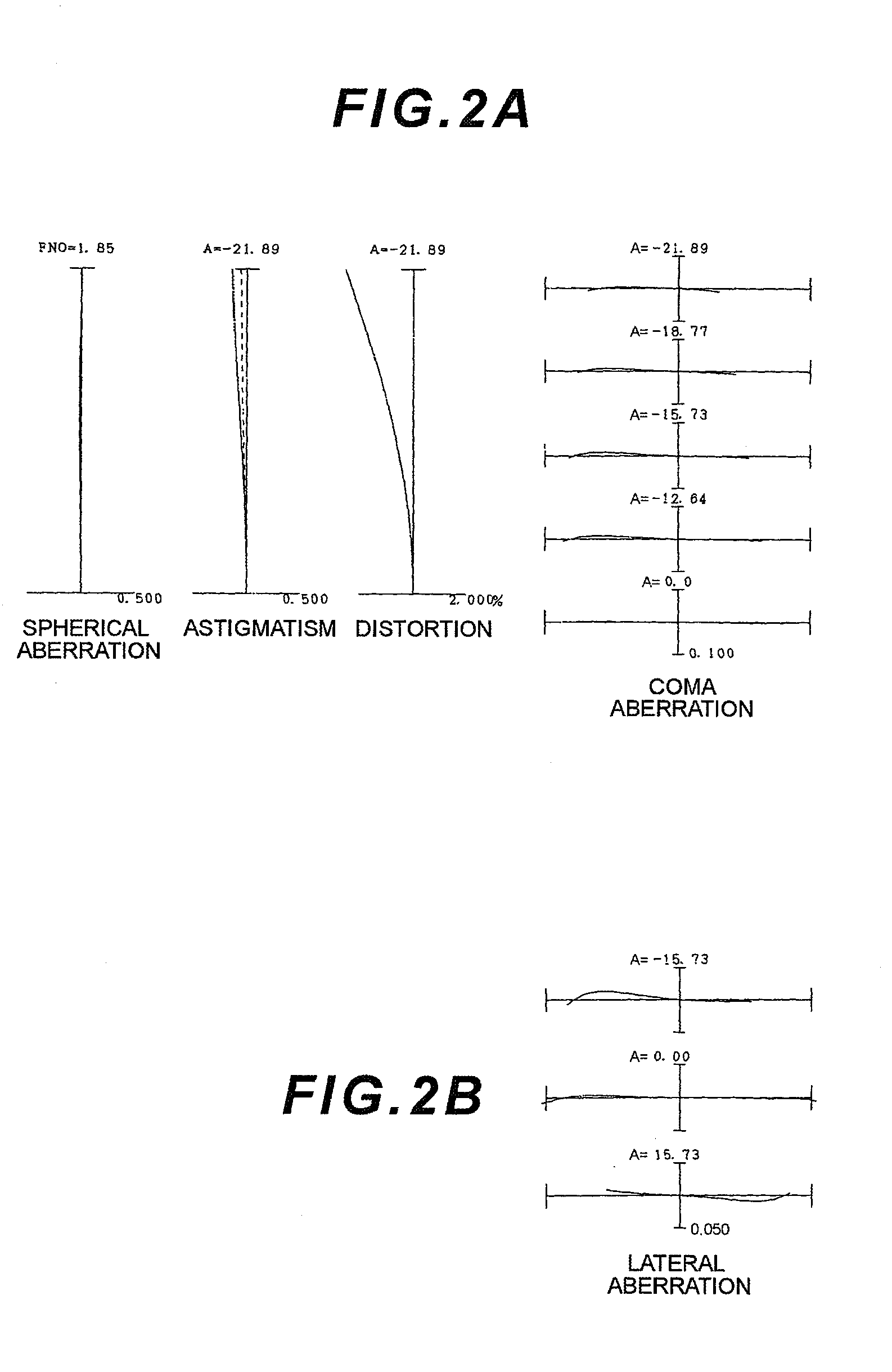Image capturing lens, optical apparatus having same, and method for manufacturing image-capturing lens
a technology of image capture and optical apparatus, which is applied in the direction of manufacturing tools, instruments, television systems, etc., can solve the problems of image quality drop, image blur, and difficulty for users to hold the camera, and achieve excellent optical performance and minimal performance change
- Summary
- Abstract
- Description
- Claims
- Application Information
AI Technical Summary
Benefits of technology
Problems solved by technology
Method used
Image
Examples
example 1
[0090]Example 1 will be described with reference to FIG. 1 to FIG. 3 and Table 1. FIG. 1 is a diagram depicting a configuration of an image-capturing lens according to Example 1, and a moving state of each lens upon a focusing state changing from focusing on infinity to focusing on a close distance. In this example, “close distance” means a −0.025× image-capturing distance.
[0091]As FIG. 1 shows, the image-capturing lens according to Example 1 has, in order from an object, an object side lens group G1 having positive refractive power, an image side lens group G2 having positive refractive power, and a filter group FL constituted by a low pass filter, infrared cut filter, or the like. Upon a focusing state Changing from focusing on infinity to focusing on close distance, that is upon focusing, the object side lens group G1 is fixed with respect to the image plane I and the image side lens group G2 moves with respect to the image plane I, and the distance between the object side lens g...
example 2
[0099]Example 2 will be described with reference to FIG. 4 to FIG. 6 and Table 2. FIG. 4 is a diagram depicting a configuration of an image-capturing lens according to Example 2, and a moving state of each lens upon a focusing state changing from focusing on infinity to focusing on a close distance. In this example, “close distance” means a −0.020× image-capturing distance.
[0100]As FIG. 4 shows, the image-capturing lens according to Example 2 has, in order from an object, an object side lens group G1 having positive refractive power, an image side lens group G2 having positive refractive power, and a filter group FL constituted by a low pass filter, infrared cut filter, or the like. Upon a focusing state changing from focusing on infinity to focusing on close distance, that is upon focusing, the object side lens group G1 is fixed with respect to the image plane I and the image side lens group G2 moves with respect to the image plane I, and the distance between the object side lens g...
example 3
[0107]Example 3 will be described with reference to FIG. 7 to FIG. 9 and Table 3. FIG. 7 is a diagram depicting a configuration of an image-capturing lens according to Example 3, and a moving state of each lens upon a focusing state changing from focusing on infinity to focusing on a close distance. In this example, “close distance” means a −0.025× image-capturing distance.
[0108]As FIG. 7 shows, the image-capturing lens according to Example 3 has, in order from an object, an object side lens group G1 having positive refractive power, an image side lens group G2 having positive refractive power, and a filter group FL constituted by a low pass filter, infrared cut filter, or the like. Upon a focusing state changing from focusing on infinity to focusing on close distance, that is upon focusing, the object side lens group G1 is fixed with respect to the image plane I and the image side lens group G2 moves with respect to the image plane I, and the distance between the object side lens g...
PUM
| Property | Measurement | Unit |
|---|---|---|
| wavelength | aaaaa | aaaaa |
| refractive power | aaaaa | aaaaa |
| focal length | aaaaa | aaaaa |
Abstract
Description
Claims
Application Information
 Login to View More
Login to View More - R&D
- Intellectual Property
- Life Sciences
- Materials
- Tech Scout
- Unparalleled Data Quality
- Higher Quality Content
- 60% Fewer Hallucinations
Browse by: Latest US Patents, China's latest patents, Technical Efficacy Thesaurus, Application Domain, Technology Topic, Popular Technical Reports.
© 2025 PatSnap. All rights reserved.Legal|Privacy policy|Modern Slavery Act Transparency Statement|Sitemap|About US| Contact US: help@patsnap.com



